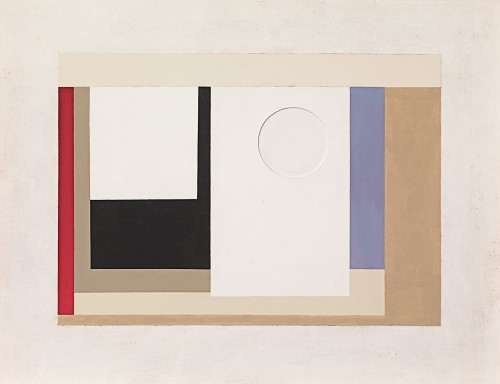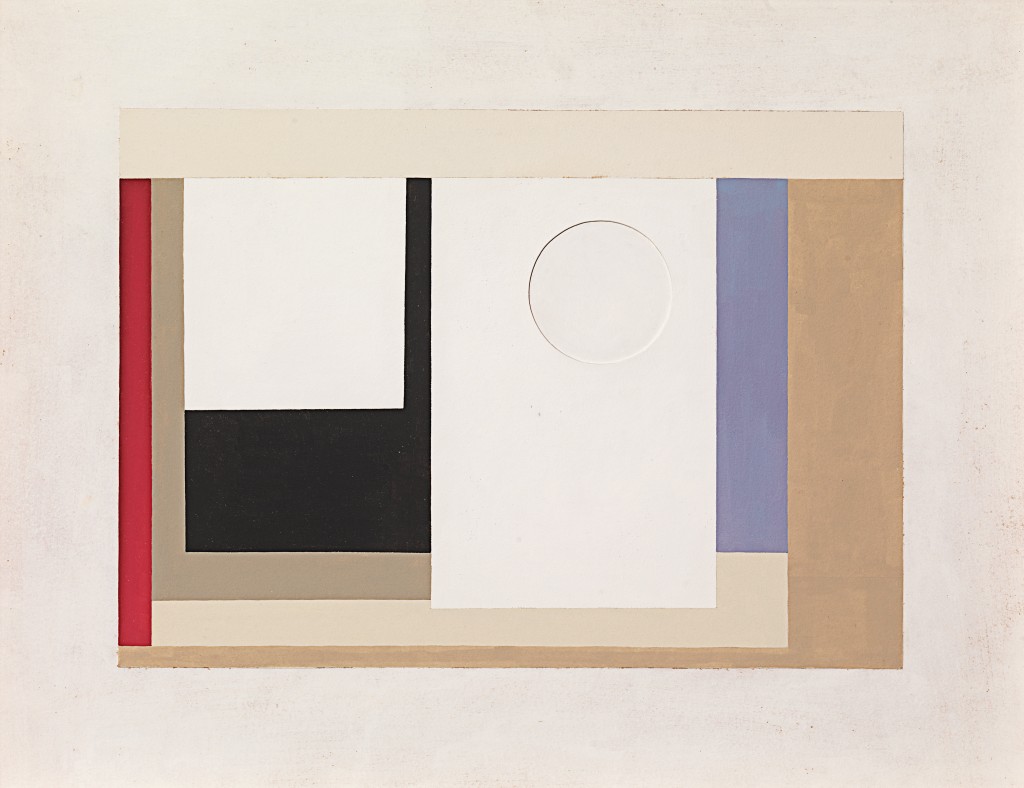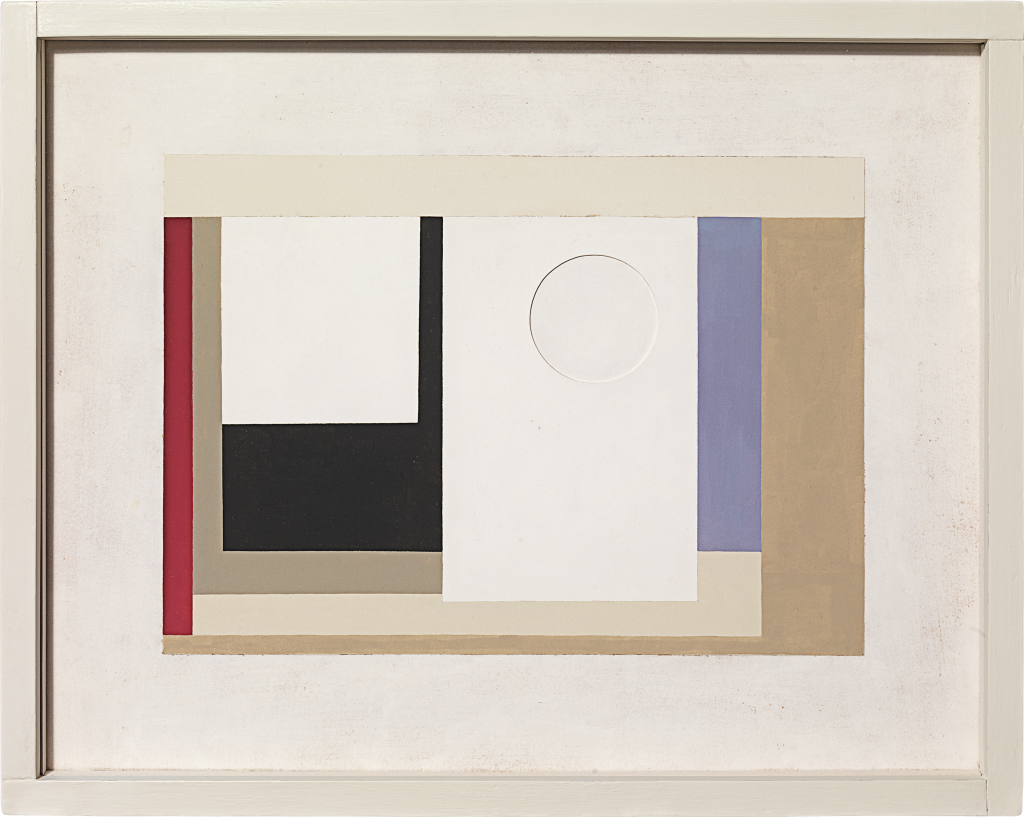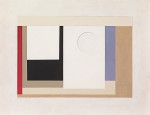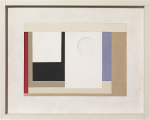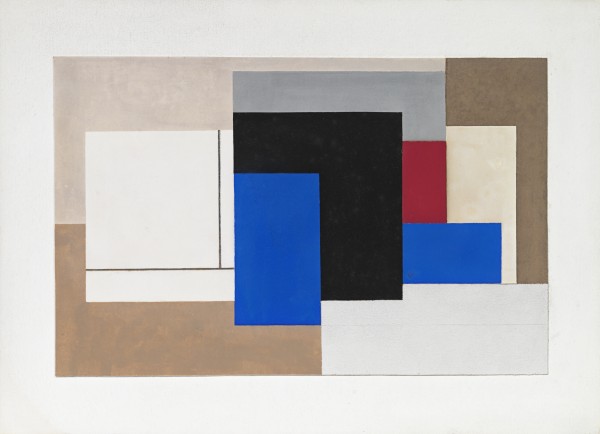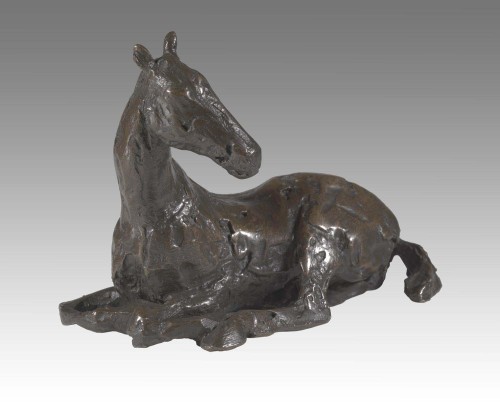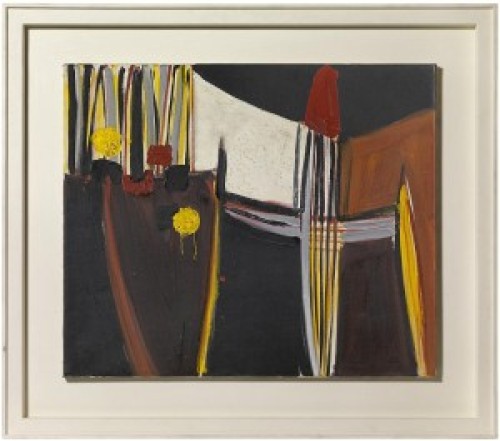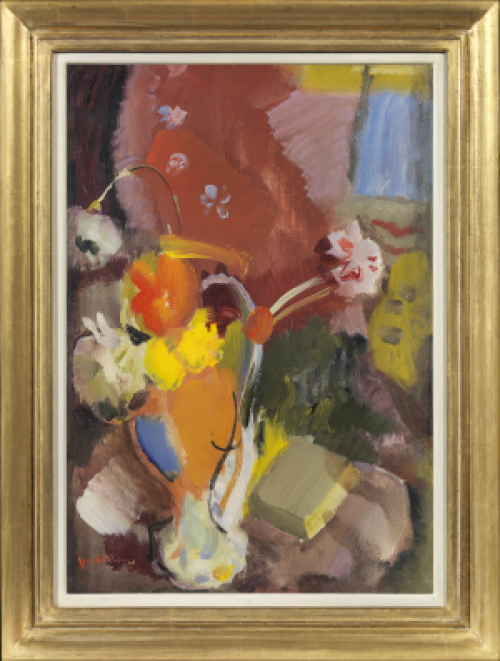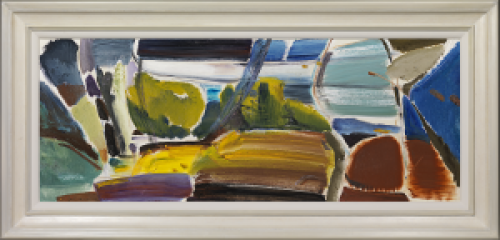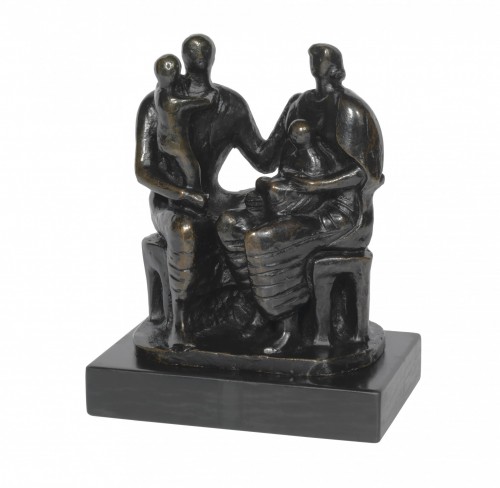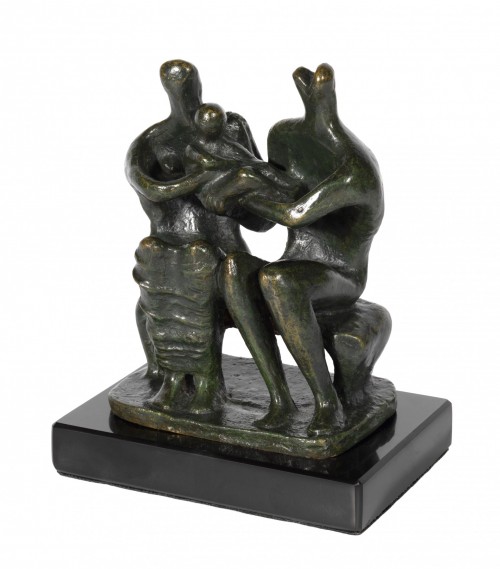BEN NICHOLSON OM
Denham 1894 - 1982 London
Ref: CB 182
1943 (painted relief)
Signed on the reverse: Ben Nicholson 1943; signed again and inscribed: Nicholson / Chy an Kerris / Carbis Bay / Cornwall
Gouache and collage: 15 x 19 in / 38.1 x 48.3 cm
Frame size: 16 x 20 in / 40.6 x 50.8 cm
In the artist’s original tenoned corner frame
Provenance:
Sir Leslie & Lady Martin
Harold Diamond, New York;
Mr & Mrs Allan D Emil, New York, acquired from the above November 1959, then by descent
Exhibited:
American Federation of the Arts, 1963, no.30, catalogue not traced
Dallas, Museum of Fine Arts, Ben Nicholson: Retrospective Exhibition, 15th April-17th May 1964, no.18
Literature:
Herbert Read, Ben Nicholson: Paintings, Reliefs, Drawings, vol.1, London 1955, no.148 (version 3)
To be included in the forthcoming catalogue raisonné of the paintings and reliefs of Ben Nicholson currently being prepared by Dr Rachel Smith and Dr Lee Beard.
The geometrical forms used by ‘constructivist’ artists do not indicate, as has been thought, a conscious and intellectual, mathematical approach – a square or a circle in art are nothing in themselves and are alive only in the instinctive and inspirational use an artist can make of them in expressing a poetic idea.
Ben Nicholson, ‘Notes on Abstract Art’, Horizon, vol.4, no.22, October 1941
In his 1941 essay ‘Notes on Abstract Art’ Ben Nicholson set out to assert his continuing commitment to non-figurative art. Aiming to demonstrate that abstraction was far from disconnected from the realities and experiences of life, the artist argued that it had, in fact, the ability to make a real and positive contribution. Against the backdrop of war, it is this deeply felt belief in the significance and poetic potential of abstract art that is evident in 1943 (painted relief). In this exquisite example Nicholson presents a compelling reworking of the compositional elements and style that had secured his reputation in the previous decade. Bringing together the distinct forms of his geometric polychromatic paintings with the physical layering of surfaces developed in his celebrated carved reliefs, 1943 (painted relief) reveals Nicholson’s focus and aesthetic integrity.
During the early 1940s, following his move to Cornwall, Nicholson had introduced into his artistic practice the process of revisiting and reworking compositions. Through the slight adjustment of colours, or the position and relationship of forms, this resulted in a number of distinct series of works. As recorded in Herbert Read’s 1948 monograph on the artist, 1943 (painted relief) is version number three from a related group of five. Whilst each work is unquestionably unique, the refining of the compositions was in keeping with the artist’s belief that the ‘right’ idea in his art would unfold over time. It was also a means by which Nicholson, impacted by the relative isolation of Carbis Bay, could keep alive discussions concerning his artistic developments with those whose opinions he valued most.
This was the case with 1943 (painted relief), owned by the architects Leslie and Sadie Martin, who possibly acquired the work during their visit to the artist’s home, Chy an Kerris, in the summer of that year. Nicholson had formed a close friendship with the Martins in the previous decade, and along with Naum Gabo and Barbara Hepworth, they had worked together on the publication Circle in 1937, a project central to the early promotion of modern art and architecture in Britain. Nicholson clearly respected their views regarding his own work, writing soon after his move to Cornwall that he depended “a lot for ‘nourishment’ on what you both think of the work when you see it”.[1] It is perhaps telling that a number of the other original owners of works in the same series as 1943 (painted relief) were also architects. Frederick Gibberd, designer of the Liverpool Metropolitan Cathedral, owned version 4. Whereas the earliest version, completed the previous year, was in the collection of Michael Ventris.
It was in relation to the display of the painted relief owned by Ventris that Nicholson remarked on the importance of the lighting of such works, noting that “at night if the light happened to be even semi-flood lit right hand side, then any relief has the same feeling as a range of [mountains] which the sun goes round”.[2] As he would explain at this time to Herbert Read, Nicholson felt that these recent paintings and reliefs had ‘an almost naturalistic ‘reality’”, appearing “[l]ike Greek or Tibetan temples against a land or seascape”.[3] It is telling that architecture and nature come together in this statement. As is evident in the band of crisp blue set against sandy hues in 1943 (painted relief), the artist’s palette had certainly been impacted by the distinct light and colours of the Cornish landscape. Nonetheless, the clarity of line and form that contain them attest to the artist’s commitment to a modernist aesthetic. As he would state later in the decade, the “kind of painting” that he found exciting was “both musical and architectural, where the architectural construction is used to express a ‘musical’ relationship between form, tone and colour”.[4] Qualities that are presented with great poise and precision in 1943 (painted relief).
Dr Lee Beard (2023), author of Ben Nicholson: Writings and Ideas (Lund Humphries, 2019).
[1] Letter to the Leslie and Sadie Martin, 11th November [1940]. The Personal Papers of Professor Sir Leslie Martin [GMA A70] National Galleries Scotland.
[2] Letter to Michael Ventris, 22nd April [1943]. Quoted in Lee Beard (ed), Ben Nicholson: Writings and Ideas, Lund
Humphries, London 2019, p.68.
[3] Letter to Herbert Read, Dunluce 24th July [1942]. Quoted in Beard, 2019, op.cit., p.88.
[4] Ben Nicholson, ‘Notes on ‘Abstract’ Art’, Horizon, vol.4, no.22, October 1941, revised and reprinted in Herbert
Read, Ben Nicholson: paintings, reliefs, drawings, Lund Humphries, London 1948.

